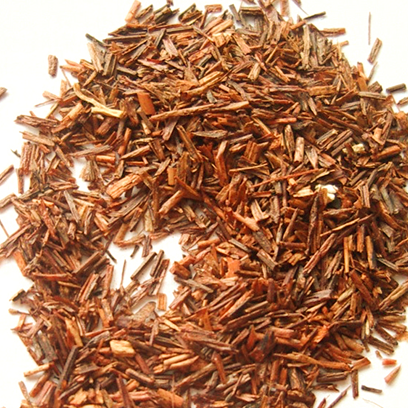ROOIBOS
Rooibos is commonly referred to as red tea. In fact, it is not a tea, but a plant with reddish leaves which is found in South Africa. Rooibos in fact means “red bush”, a term that originates from Afrikaans, one of the South African languages. The shrub only grows in a specific region of South Africa, the Cederberg, and is the official South African drink. It is a rosemary-like shrub, consisting of thin branches with short, needle-like leaves. It has a deep yellow inflorescence made up of small, leaf-shaped flowers which are close together and overhang the branch to form a coloured ball of many flowers. The leaves are the parts which are used, and take on a reddish colour as a result of the grinding, drying and fermentation process, giving the infusion a beautiful amber colour. It contains no caffeine, and is particularly good for promoting sleep. Its known antioxidant properties derive from the presence of polyphenols, which counteract the formation of free radicals in the body. Rooibos also has antiviral and anti-inflammatory qualities. The scientific name for Rooibos is Aspalathus linearis. The plant belongs to the legume family, and does not contain tannins, thus having a sweet and pleasant taste. It also contains significant amounts of flavonoids, polyphenols, vitamin C and minerals such as zinc, calcium, iron and phosphorus. These ingredients provide Rooibos with its most important benefit, namely its ability to modulate and strengthen the immune system, thereby helping to prevent the onset of diseases or to fight their effects.
Used in: Pinelli Immuno Project™

